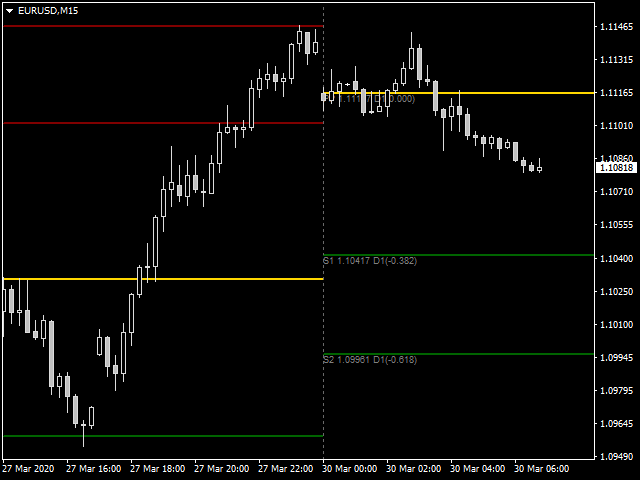Pivot points is a set of indicators developed by floor traders in the commodities markets to determine potential turning points, also known as “pivots”. Forex pivot points are calculated to determine levels in which the sentiment of the Forex market trend could change from “bullish” to “bearish.” Currency traders use these points as markers of support and resistance.
Forex pivot points are calculated as the average of the high, low and close from the previous trading session:
Forex Pivot Point = (High Low Close) / 3
Day traders use the calculated pivot points to determine levels of entry, stops and profit taking, by trying to determine where the majority of other Forex traders may be doing the same.
A pivot point is a price level of significance in technical analysis of a financial market that is used by traders as a predictive indicator of market movement. It is calculated as an average of significant prices (high, low and close) from the performance of a market in the prior trading period. If the market in the following period trades above the central pivot it is usually evaluated as a bullish sentiment, whereas trading below the central pivot is seen as bearish.
Pivot point is used to calculate additional levels of support and resistance, below and above central pivot, respectively, by either subtracting or adding price differentials calculated from previous trading ranges of the market.
A pivot point and the associated support and resistance levels are often turning points for the direction of price movement in a market.
[spoiler title=”Read More…”]
- In an up-trending Forex market, the pivot point and the resistance levels may represent a ceiling level for the price. if price goes above this level the uptrend is no longer sustainable and a trend reversal may occur.
- In a declining market, a pivot point and the support levels may represent a low for price level or a resistance to further decline.
The central pivot point can then be used to calculate the support and resistance levels as follows:
Pivot points consist of a central pivot level surrounded by three support levels below it and three resistance levels above it. Pivot points were originally used by floor traders on equity and futures exchanges because they provided a quick way for those traders to get a general idea of how the market was moving during the course of the day using only a few simple calculations. However, over time they have also proved exceptionally useful in other markets as well.
One of the reasons they are now so popular is because they are considered a “leading” (or predictive) indicator rather than a lagging indicator. All that is required to calculate the pivot points for the upcoming (current) trading day is the previous day high, low, and close prices. The 24-hour cycle pivot points in this indicator are calculated according to the following formulas:
The central pivot can then be used to calculate the support and resistance levels as follows:
Resistance 3
Resistance 2
Resistance 1
Pivot Point
Support 1
Support 2
Support 3
Pivot levels can be used in many different ways. Here are a few of the most common methods for utilizing them:
Trend Direction: Combined with other Forex analysis techniques such as overbought/oversold oscillators, volatility measurements, etc., the central pivot may be useful in determining the general trending direction of the Forex market. Trades are only taken in the direction of the Forex trend. Buy trades occur only when the price is above the central point and sell trades occur only when the price is below the central pivot.
Price Breakouts: When trading price breakouts, a bullish buy signal occurs when the price breaks up through the central pivot or one of the resistance levels (typically Resistance 1). A short sell signal occurs when price breaks down through the central point or one of the support levels (typically Support 1).
Trend Reversals: When trading trend reversals, a buy signal occurs when the price moves towards a support level, gets very close to it, touches it, or moves only slightly through it, and then …
[/spoiler]





